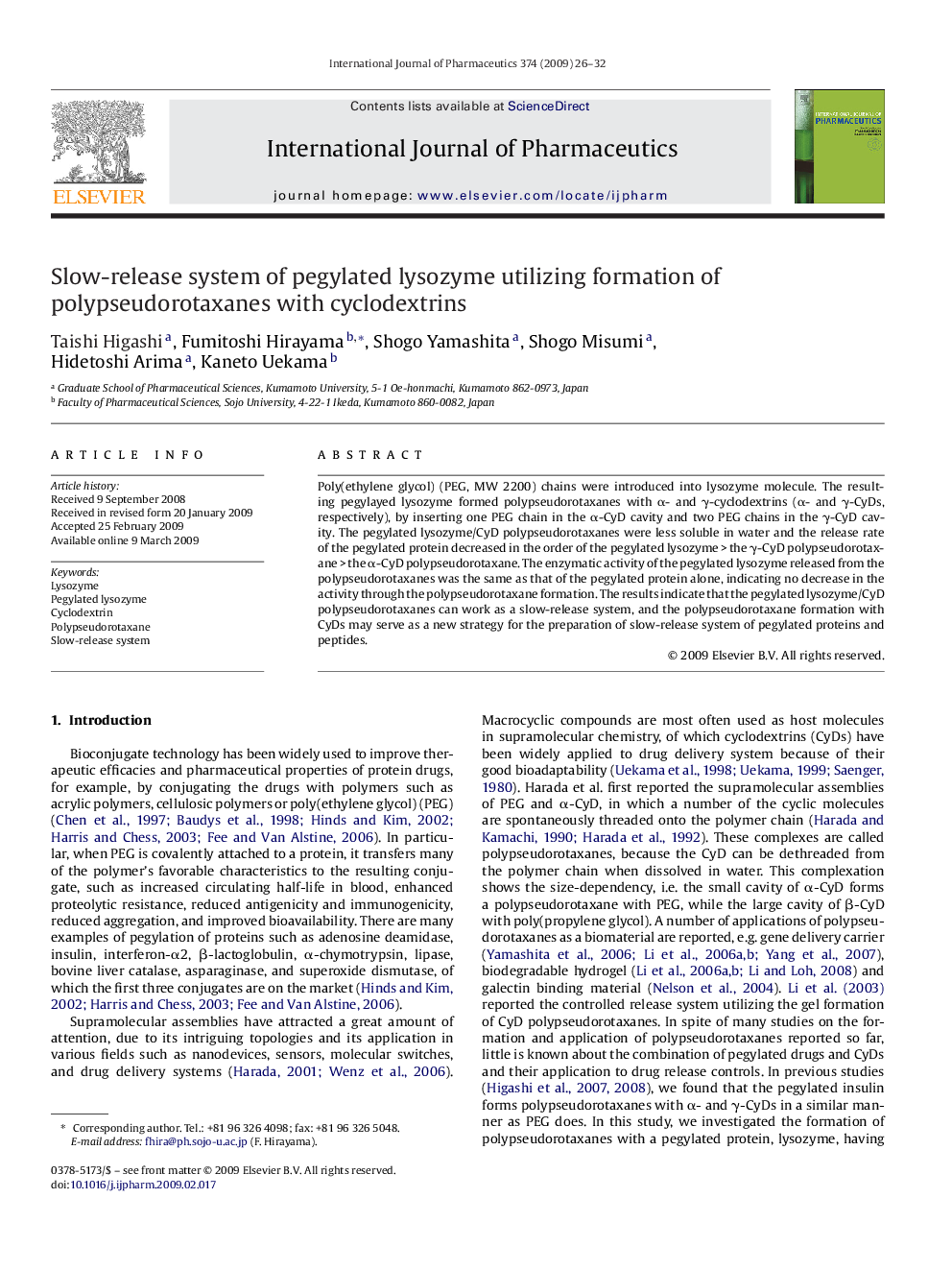| Article ID | Journal | Published Year | Pages | File Type |
|---|---|---|---|---|
| 2504814 | International Journal of Pharmaceutics | 2009 | 7 Pages |
Poly(ethylene glycol) (PEG, MW 2200) chains were introduced into lysozyme molecule. The resulting pegylayed lysozyme formed polypseudorotaxanes with α- and γ-cyclodextrins (α- and γ-CyDs, respectively), by inserting one PEG chain in the α-CyD cavity and two PEG chains in the γ-CyD cavity. The pegylated lysozyme/CyD polypseudorotaxanes were less soluble in water and the release rate of the pegylated protein decreased in the order of the pegylated lysozyme > the γ-CyD polypseudorotaxane > the α-CyD polypseudorotaxane. The enzymatic activity of the pegylated lysozyme released from the polypseudorotaxanes was the same as that of the pegylated protein alone, indicating no decrease in the activity through the polypseudorotaxane formation. The results indicate that the pegylated lysozyme/CyD polypseudorotaxanes can work as a slow-release system, and the polypseudorotaxane formation with CyDs may serve as a new strategy for the preparation of slow-release system of pegylated proteins and peptides.
